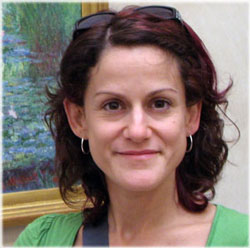Uncategorized
now browsing by category
Juice Brawl
 The Juice Bar Brawl, a New York Times article on the new juice bar craze that’s taken root in New York and LA, caught my eye, partly because it’s clear the entire industry has taken note of (but missed the core point of) my Drink My Salad article.
The Juice Bar Brawl, a New York Times article on the new juice bar craze that’s taken root in New York and LA, caught my eye, partly because it’s clear the entire industry has taken note of (but missed the core point of) my Drink My Salad article.
As you may remember, my recommendation for those, like me, too lazy to actually sit and, you know, eat vegetables, was to try throwing them in a blender with a bit of carrot juice and coconut water (for liquidity) as well as raspberries and mint (for sweetness and zing).
Apparently, the LA / NY scene is on to the same idea:
Half a decade ago, most people who were found guzzling and gushing about juice — not grocery store O.J., but the dense, cold-pressed stuff that is made by pulverizing mounds of ingredients like kale, beets, ginger, spinach and kohlrabi — were either zealots from the raw-food fringe or Hollywood celebrities who believed that a “juice cleanse” would nudge their toned bodies even closer to radiant perfection.
But along the way, more people started drinking it. And for consumers and entrepreneurs, a realization took hold: juice did not have to be part of a challenging, expensive cleanse. It could simply be lunch. Suddenly, cold-pressed juice morphed from a curiosity to an industry.
But wait! Not so fast! There’s a big difference between eating the whole, blended vegetable, and just drinking its juice: the fiber!
When you juice a vegetable, you leave the fiber behind. But the fiber is a key component in modulating the way your body absorbs sugars. If you extract just the sweet juice from vegetables and leave the fiber behind, you end up with a sugar rush: the same kind of thing you get from drinking a soda. Rapid fluctuations in blood sugar has been tied to a variety of health ailments, including Type 2 Diabetes. Fiber also lowers bad LDL cholesterol, promotes heart health and gives you the feeling of satiety that helps keep your mind away from unnecessary snacking.
And don’t even start talking Jamba Juice, which adds corn syrup to their “smoothies”, unless you really want to get me started.
When Michelle talks about “whole foods”, it’s usually set in contrast to “processed foods”. But here, it also means: “the WHOLE food”, as in, eat the whole thing, rather than strip-mining just the sweet parts you like.
Hidden Gluten Ingredients
Shopping for gluten free has become much easier in recent years. Many packages promote their status with splashy labels of “GF” or even “certified gluten free”.
 But what about the packages that don’t have those handy words printed on them? Do you just read the ingredient list and look for the word ‘gluten’? Or maybe check to see if it says ‘wheat’? If you must avoid gluten, neither of those words is enough.
But what about the packages that don’t have those handy words printed on them? Do you just read the ingredient list and look for the word ‘gluten’? Or maybe check to see if it says ‘wheat’? If you must avoid gluten, neither of those words is enough.
Since gluten is found in barley, wheat and rye, those words are great starting points, but gluten is often hiding out in the ingredients list under other names. It’s hiding in there and your job is to identify it and avoid it.
Malt flavoring? It comes from barley, doh! Seiten? Sure, it’s vegetarian – but it’s got wheat!
Now here’s the really tricky stuff: these things don’t even sound like foods, much less like gluten. Hydrolyzed plant protein? It can be derived from a gluten-containing plant. Dextrin? Unless it’s labeled gluten free, it might come from wheat. Triticum vulgare germ extract? It’s basically wheat germ oil.
Other key words to be wary of include filler, coating, natural flavoring, natural coloring, binding, starch and stabilizer. These can all contain gluten, unless specifically labeled otherwise.
Foods that often seem fine at first glance, but are not upon closer inspection include soy sauce (but not tamari), teriyaki sauce, vegetable broths and bouillon.
There are a number of good lists online of “hidden gluten”, but I’ve found celiac.com to be one of the most extensive. They have an ‘unsafe ingredients’ list as well as a ‘safe ingredients’ list. I recommend bookmarking them on your smart phone so that you can call them up while you’re shopping. When I changed to a gluten free diet I relied on these lists until I became familiar with some of the more common terms.
Finally, note that although oats are inherently gluten free, sensitive individuals may experience trouble eating them. Cross-contamination with gluten during the growing, transporting, processing or packaging of oats can occur, so always look for the gluten free label if you buy oats. Also, people who can’t eat gluten frequently have problems with oats regardless of their gluten free status.
Passover 2013

Fortunatley, we found a very tasty “matza-like” alternative: Yehuda Gluten Free Matzo Style Squares. They’re tasty, a bit sweeter than their glutinous cousins, and just as difficult to break along the scoring. The matza, made from potato starch, is kosher, but not for “sacramental purposes”. Since we can’t have gluten, though, these work as a suitable replacement for our family.
Of course, our family has about 20 other foods on the “no” list, but I actually enjoy the challenge of creating a menu that will accommodate everyone’s diets and still be thoroughly enjoyable and memorable.
For a seder (the Passover ceremony and meal), there are a few traditional dishes that I use as my base, and then, keeping in mind what’s safe for all diners to eat, I make a menu.  This year we ate:
This year we ate:
- Matza & Charoset
- Deviled Eggs
- Matza Ball Soup (thank you, Elana’s Pantry for the matza ball recipe)
- Green Salad with Jordan’s Famous Dressing*
- Roasted Sweet Potato Strips
- Roasted Balsamic Asparagus
- Roasted Beets with Orange Zest
- Applesauce
- Brisket
Followed by
- Almond-Strawberry Mini Cupcakes (topped with coconut whipped cream)
- Chocolate Coconut Mini Cupcakes (topped with coconut whipped cream)
- Linzer-like Cookies (I substituted sugarless fruit jam for the date filling)
For the matza balls, Elana’s pantry recommends some specific almond flours that have a fine texture. We didn’t have those, so I substituted Bob’s Red Mill Almond Meal/Flour instead. The matza balls came out tasting very much like a “regular” matza ball, but with a slightly grittier texture, at least when they first touched the tongue. It wasn’t a bad sensation, just a little jarring when you’re expecting a fluffy soft matza ball like your bubbe used to make.
Yum, right? Keep in mind that this delicious menu contained only whole foods (with the exception of the matza, but, hey – you gotta have matza!), had no grains or refined sugar. Any of the recipes could work for a host of healthy diets – whole foods, gluten-free, and paleo. Most are suitable for both SCD or GAPS.
* Equal parts 1/2 c olive oil, 1/2 c balsamic vinegar, 3 healthy “splorches” (Jordan’s words) of stone ground mustard, one hefty spoonful of honey, in a blender.
Helping You Eat
 I had a puzzling conversation with a friend last week that snapped the work I’ve been doing with my food workshop into focus.
I had a puzzling conversation with a friend last week that snapped the work I’ve been doing with my food workshop into focus.
What she told me, in essence, was that her child had chronic digestive issues as well as a litany of other ailments, including asthma and eczema, some of which were requiring increasing medication, and she had her own set of health issues. She told me that she was sure that food sensitivities were at the root of many, if not all of these problems.
Then she told me “I know I should change our diet, but I just can’t.”
I’ll admit, I was flabbergasted, at first. You know that the things you’re putting into your own and your child’s body are causing long-term harm, but you “just can’t” stop? Are you addicted? Do you have not have access to alternatives? Do you not care?
But the more I thought about it, I realized that the answer was simpler. She didn’t mean “I can’t change”, she meant “I don’t know how to change, I don’t know where to start and I can’t figure out how to figure it out.”
Now that, I get. I’ve had my share of obstacles in my life where I simply didn’t know where or how to start solving a problem, didn’t know what the first step was, and that’s where the process ended. I saw the problem in front of me like a huge, smooth wall stretching out to the horizon in both directions. My eyes glazed over, I shrugged, turned around and walked the other way.
But for this particular problem, the one that she has, the one that so many of my friends and neighbors have, I do know how to to change, I do know where to start. I faced this exact problem myself: My family and I suffered from one health ailment after another, the most serious being that my pancreas stopped producing essential enzymes, my husband suffered from colitis, and my son experienced debilitating and terrifying digestive issues. I spent literally years researching and experimenting, trying to learn new ways of feeding myself and my family, knowing that whatever I came up with, I’d have to figure out a way to make it work every single day of the rest of my life.
And because I’d been through it myself, I can help my friend make the change she wants in her life, if she really wants it, that can lead to better health not only for her, but for her children as they grow up. Helping people to live happier, healthier lives? That’s a fine mission for life.
So that’s what I’ll be doing here and in my workshops: sharing ideas, recipes, news and thoughts that can help people change the way they eat to create the kind of healthy lives that we all want.
I hope you’ll come along for the ride. If you have ideas you want to share, please let me know. If you have questions you want answered, same same.
Thanks for reading. Now, let’s get started.
